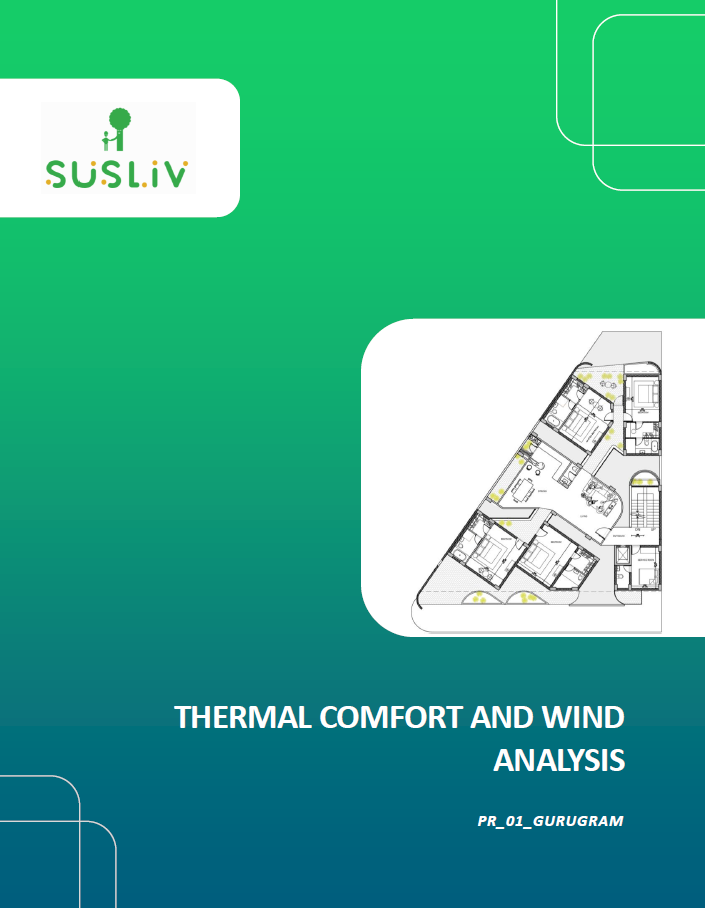Delhi residence, DastakariX, Sustainability and design assistance
Project Summary
The project focuses on evaluating and optimizing the thermal comfort and wind performance of a building in Gurugram, Haryana, which experiences a composite climate characterized by hot, dry summers and mild to severe winters. The study examines four distinct design cases—base case, shaft cut-outs and balconies, skewed courtyards, and tapered floors—to assess how different architectural interventions affect both indoor thermal comfort (measured in comfortable hours and degree discomfort hours) and airflow dynamics within the site. The results indicate that while strategies like shaft cut-outs and balconies improve both comfort and air movement, further modifications such as skewed shafts and tapered floors enhance wind velocity but may slightly reduce thermal comfort due to increased air drafts. The project concludes by recommending the adoption of smaller shafts and balconies with reduced window sizes to maximize occupant comfort.
Project Details
| Location | Gurugram, Haryana, India (composite climate zone) |
|---|---|
| Climate Context | Hot and dry summers (March–June, up to 40°C), mild to severe winters (November–February, 10–25°C), transitional seasons with pleasant temperatures (20–30°C), significant seasonal humidity variation. |
| Design Cases Analyzed |
|
| Thermal Comfort Analysis |
|
| Wind and CFD Analysis |
|
| Conclusions and Recommendations |
|
